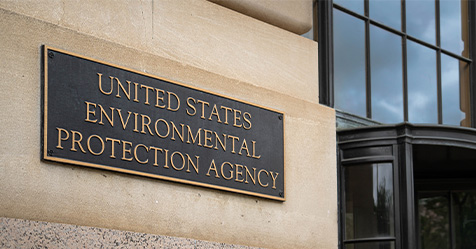Historically, the United States has had an abundance of water. The country has about 4.5 percent of the world’s population, but nearly 8 percent of its renewable freshwater.
While there have been serious droughts in the United States, including the great Dust Bowl, which dried up huge areas of the Midwest and northern plains in the early- to mid-1930s, it was not until the late 1970s and again in the 1980s that the water wake-up call sounded.
Droughts in the 70s and 80s
In 1977 and then again in the late 1980s, California was hit by two very serious droughts. The first one only lasted about one year. But, if it had lasted longer, the state would have essentially gone dry.
The drought in the late 1980s was a bit less severe, but still resulted in some of the first water restrictions ever passed in the country. These restrictions required toilet manufacturers to reduce the amount of water their fixtures used to 1.6 gallons per flush down from 2 to more than 3 gallons per flush. Urinals were restricted to about one gallon, which was also a significant reduction.
The Result: Technology Improvements
These droughts and regulations became the impetus for manufacturers to come up with new technologies to reduce the amount of water in products we use. For instance, a recent report by the non-profit Alliance for Water Efficiency compares water-using products we use every day in homes and offices with how much water these products used in the 1980s. Among the report’s findings are the following:
- Commercial faucets showed an 86 percent reduction (from 3.5 to .5 gallons per minute) in the amount of water used in 2015 compared to the 1980s.
- Commercial toilets showed a 68 percent reduction (from 5 to 1.6 gallons per minute) in the amount of water used in 2015 compared to the 1980s.
- Urinals showed a 67 percent reduction (from 14 to 5 gallons per cycle) in the amount of water used in 2015 compared to the 1980s.
Impacting the Professional Cleaning Industry
Almost 30 years ago when manufacturers began introducing portable low-moisture carpet extractors, the goals were to address environmental issues and encourage greater customer satisfaction with faster drying times.
However, in order to build the machines, manufacturers had to either improve the vacuum systems on the extractors so the equipment could remove more moisture or reduce the amount of water the machines used in the first place.
However, what many manufacturers did was a combination of both. Traditional carpet extractors were using 1.5 or more gallons of water per minute. This means a 60-minute carpet cleaning job could easily use up to 100 gallons of water. With machines that consumed less than 1 gallon of water per minute, those numbers could be brought down to 50 to 60 gallons.
Similarly, equipment sometimes referred to as low-moisture floor machines have also helped reduce water consumption. An example of low-moisture equipment is cylindrical brush floor machines. These machines use as much as 30 percent less water than a comparable rotary floor machine, simply by the way they work and their designed.
Even microfiber cloths and mop heads have helped the industry use less water. According to the U.S. Environmental Protection Agency (EPA), water use is cut by 95 percent when using a microfiber mop head compared to a traditional string mop.
How to Practice Water Reduction
Beyond these technologies, there are ways cleaning professionals can help reduce the amount of water used in cleaning, and help the facilities they clean use less water. Among them are the following:
- If a hose must be used to clean, do not use an open hose. Instead, use a spray gun that ensures water releases only when necessary.
- If using a nozzle on a hose, change the nozzle every few months. Orifices on nozzles become wider as they are used, causing the nozzle to use considerably more water.
- When cleaning commercial kitchens, a wall-mounted chemical/water-dispensing system can be very effective; however, these systems can release more than 10 gallons of water per minute— 600 gallons in an hour.
- Encapsulation and other dry carpet cleaning systems use no water at all and can help delay carpet extraction by several months.
- Use chemical dilution systems; while these systems were designed to monitor chemical use, they also monitor water use and can ensure to use enough water only to address the cleaning task at hand.
- Suggest that facility managers conduct a water audit; a water audit can show where water is being used, misused, or can be used more efficiently.
- Take a leading role in educating your customers and building users on ways to reduce consumption; this helps build customer loyalty, and using water more efficiently is something all build users must do.
Where it All Stands
Does all this good news mean we are out of the woods when it comes to water shortages in the United States? No. We are far from it. Climate change is having a big impact on water resources. Some areas of the country are experiencing more severe droughts than ever before. Even in water-rich areas of the country, due to warmer temperatures, the rate of evaporation has increased.
While we have made significant progress in reducing water consumption during the past 30 years, we are, at this time, in the second wave of water efficiency. The third wave, which is right around the corner, is going to result in more technologies, procedures, and products that can help us reduce water consumption far more than we have so far.



